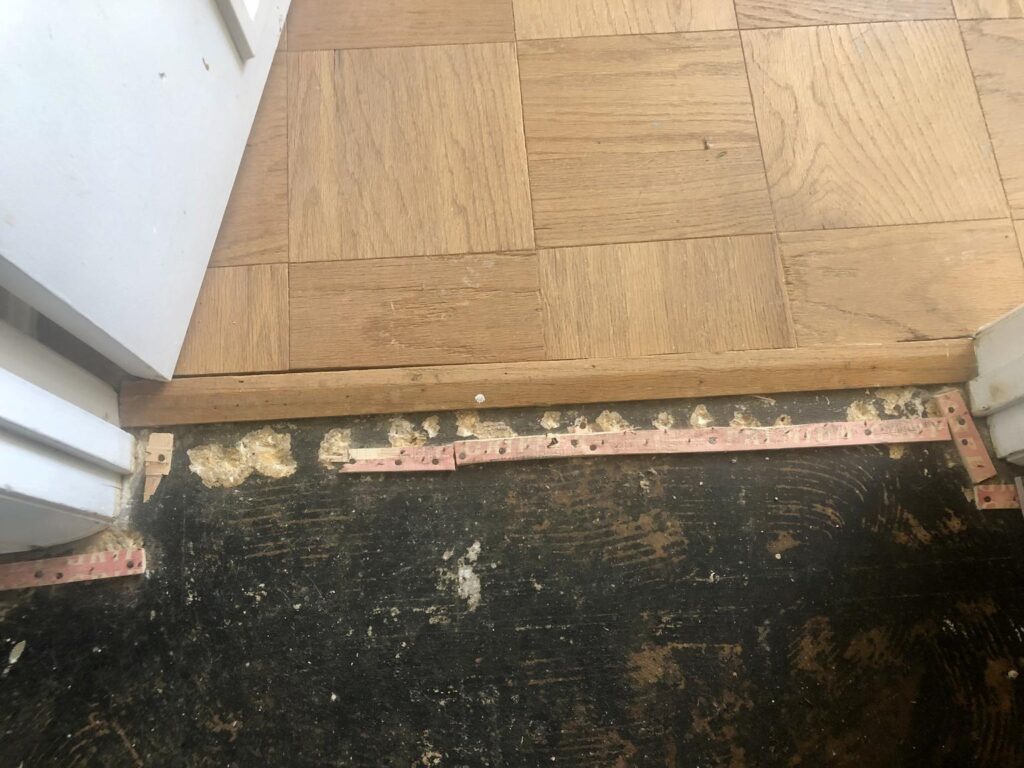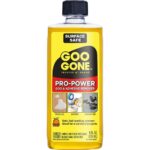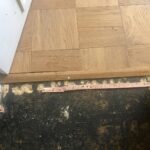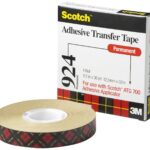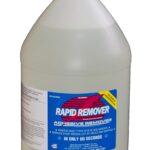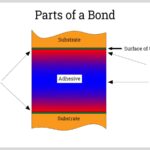Cutback adhesive is a type of adhesive made up of an elastomeric bitumen and a solvent. It is usually used as a bonding agent when installing asphalt shingles, tiles, and other materials. This adhesive is known for its excellent flexibility and strength for many years after the installation. Cutback adhesives are also often used for other bonding tasks such as repairing asphalt roofs, pavements and other surfaces. Cutback adhesives are created by heating asphalt and adding a solvent to it, usually kerosene.
This mixture is then cooled and left to thicken before it is ready to be used. Cutback adhesive is usually black in color and has a thick and sticky consistency. When it is applied it has to be heated and spread evenly over the surface. Cutback adhesive can be used in a variety of applications and is known for its strong and durable bond. It is especially effective in outdoor conditions and is resistant to water, UV rays, and other weather conditions. It is also able to withstand extreme temperatures, making it ideal for a variety of projects. Cutback adhesive is an excellent choice for bonding materials together, providing a secure bond and lasting hold. It is an excellent choice for many outdoor projects due to its durability and resilience. This adhesive is an ideal choice for those looking for a strong and durable bond for their projects.
What is cutback adhesive residue
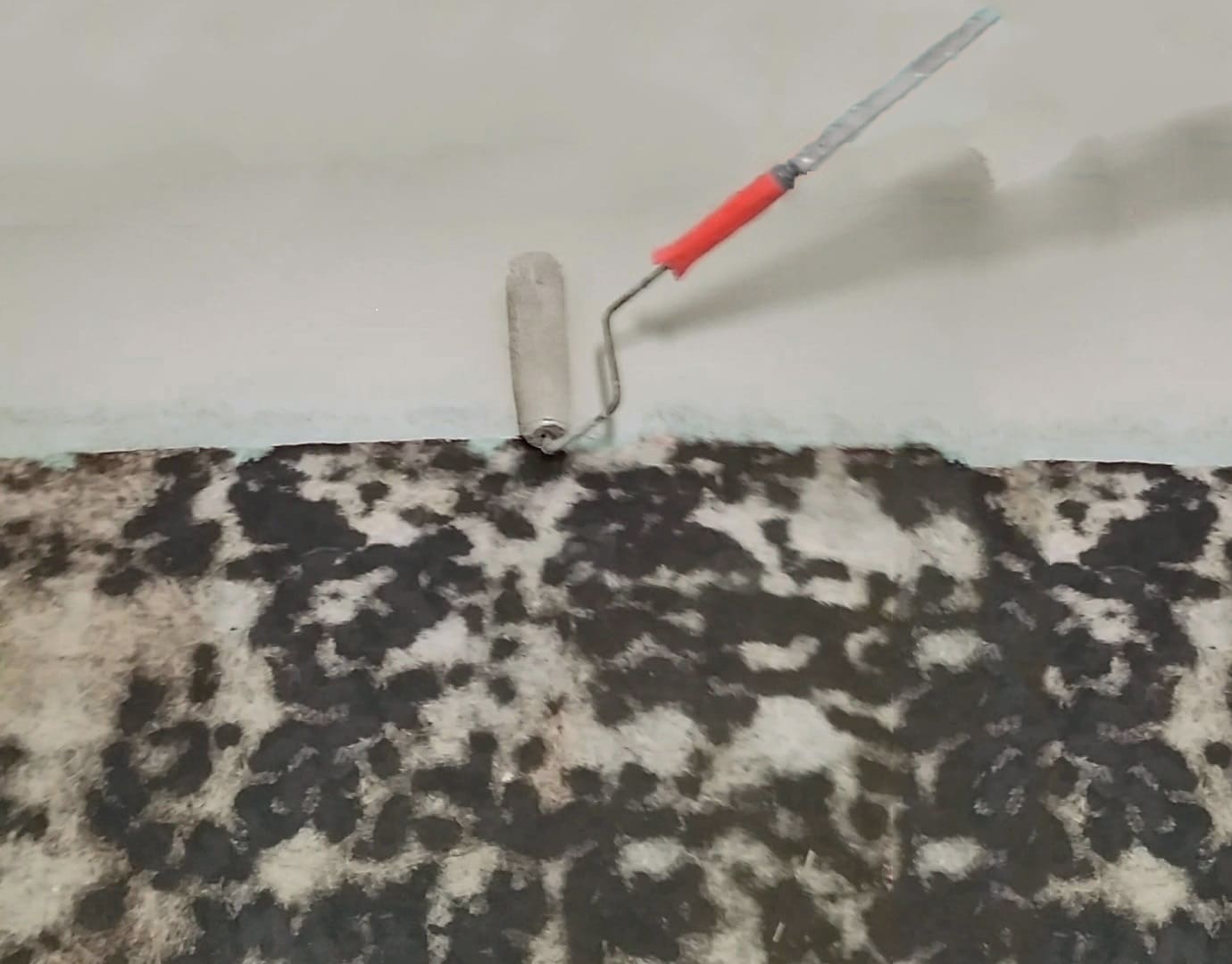
This solvent helps to break down the adhesive so that it can be spread and applied more easily. Once the adhesive has been applied, the solvent evaporates, leaving the adhesive in place. However, the cutback adhesive residue is what’s left behind once the solvent has evaporated. This residue consists of the adhesive material and any other materials that may have been mixed in with it. The residue can be difficult to remove and, if not taken care of, can cause problems with the performance of the final adhesive bond.
The best way to remove cutback adhesive residue is to use a solvent that is compatible with the adhesive material. This allows the residue to be removed without damaging the substrate or causing other problems. There are also a variety of chemical and mechanical methods that can be used to remove the residue. In most cases, cutback adhesive residue will need to be removed in order to ensure that the adhesive bond is strong and can withstand the stresses it needs to bear. If not taken care of, the residue can cause the bond to fail, resulting in costly repairs or replacements. Cutback adhesive is a great way to make sure that a strong bond is formed between two surfaces. However, it is important to remember that the residue left behind must be taken care of in order to make sure that the bond holds. By taking the right steps to remove the residue, the adhesive will remain strong and reliable.
What is cut back adhesive?
This type of adhesive is different from other types of adhesives because it has a lower viscosity and is softer in texture. This allows it to be used on surfaces that would otherwise be difficult to bond with other types of adhesives. Cutback adhesive is created by combining a polymer-based adhesive with a solvent. The solvent used in the mixture helps to reduce the viscosity of the adhesive, which makes it easier to apply. When the adhesive sets it hardens, creating a strong bond between the surfaces.
This type of adhesive is ideal for applications that require a strong bond but are difficult to achieve with traditional adhesives. Cutback adhesive is often used in applications such as carpentry and home remodeling. It is also used extensively in construction projects to connect various materials and surfaces. This type of adhesive is also used in the automotive industry to bond parts together. It is also used in furniture assembly for its superior bonding and strength properties. Cutback adhesive is available in various forms such as liquid, paste, and tape. Depending on the application, a different type of cutback adhesive may be required. It is important to choose the right type of adhesive to ensure that the bond created is strong and durable. Overall, cutback adhesive is a versatile adhesive that can be used in a variety of applications. It is extremely strong and durable, and can be used to bond a variety of materials together. Its low viscosity makes it easier to apply, and it is also resistant to most solvents and chemicals.
How do I remove cutback adhesive from hardwood floors?
What is Cutback Adhesive? Cutback adhesive is a type of strong adhesive used in flooring. It is often used to stick down vinyl tiles and sheet vinyl to hardwood floors. Removing cutback adhesive from hardwood floors can be a difficult task. The best way to remove cutback adhesive is to start by scraping away as much as possible with a putty knife. Then, use a combination of water and detergent to try and soften the remaining adhesive.
If this does not work, you may need to try a product specifically designed to remove cutback adhesive from hardwood floors. Once you have removed all the adhesive, it is important to thoroughly clean the floor and let it dry completely before applying a new adhesive or sealant. Sealing the surface will help to protect the wood from any damage caused by the adhesive. It is important to take your time when removing cutback adhesive from hardwood floors as this is a difficult and painstaking task. Following the steps outlined above will help ensure that your hardwood floors remain in good condition.
Can I tile over glue residue?
When tiling over glue residue, cutback adhesive is a great option because of its strong, flexible bond that resists cracking and peeling. It can be applied directly onto the glue residue, allowing you to tile over it without the need for any extra preparation. Cutback adhesive is a bit more expensive than traditional mortar or cement, but it’s worth the extra money for the reliable bond it provides. It also dries faster than mortar or cement, so your tiling project can be completed sooner. Cutback adhesive is also easy to use, making it a great choice for DIYers.
It can be applied using a trowel, and it’s best to use a small amount at a time, as it can become difficult to spread once it starts to dry. You should also wear gloves and a mask when working with cutback adhesive, as it is a bit caustic and can irritate skin and eyes. Overall, cutback adhesive is an excellent option for tiling over glue residue. It creates a strong, flexible bond that is resistant to cracking and peeling, and it’s easy enough for DIYers to use. Just be sure to wear gloves and a mask when applying it, and use a small amount at a time to make it easier to spread.
How do you deal with cutback adhesives?
What is cutback adhesive? Cutback adhesive is a type of adhesive that is created by adding a volatile solvent to an adhesive that has already been applied. This type of adhesive is often used in flooring, tiling, and other home improvement projects that require a strong bond. When dealing with cutback adhesive, it’s important to wear protective gear, such as gloves and a respirator, to avoid inhaling the volatile solvent. Additionally, it’s important to allow ample ventilation in the area where the adhesive is being applied to ensure that the solvent quickly evaporates. It’s also important to keep the adhesive away from heat sources, such as open flames or hot plates, as the heat can cause the volatile solvent to ignite and cause a fire.
Before using cutback adhesive, it’s essential to read the instructions and safety warnings on the product label. It’s important to make sure that you are using the right type of adhesive for the job and that you are familiar with the correct application techniques. When storing cutback adhesive, it’s important to keep it away from children and pets and to ensure that it is sealed tightly to avoid any spills. Additionally, it is important to dispose of any unused adhesive according to the local regulations.
Is old cutback adhesive residue an issue?
The adhesive residue left behind after a cutback adhesive has been applied is often referred to as “old cutback adhesive residue”. This old cutback adhesive residue can pose a serious issue in certain situations. For example, when the adhesive is used on porous materials, the residue can seep into the material and become difficult to remove. This can cause discolouration and staining to the material, as well as affect its overall look and feel. The issue of old cutback adhesive residue is particularly problematic for tiles and other materials that need to look pristine and without any staining or discolouration.
In these cases, the adhesive can be extremely difficult to remove and may require special cleaning methods or solvents. In some cases, it may be better to prevent old cutback adhesive residue from occurring in the first place. This can be done by ensuring the cutback adhesive is applied properly and in thin layers. Additionally, it can help to use appropriate cleaning products to remove any residue as soon as possible after application. Overall, old cutback adhesive residue can be an issue, especially when used on porous materials. However, proper application techniques and cleaning methods can help to prevent residue build up, resulting in better bond strength and a more professional look.
How do you remove cutback adhesive?
What is Cutback Adhesive? Cutback adhesive is a type of glue that is used to bind together different materials. It has a high adhesive strength and is well-suited for many applications. It is particularly useful for bonding materials that have a very smooth surface. How do You Remove Cutback Adhesive? Removing cutback adhesive can be a tricky task, as it is designed not to come off easily. However, there are a few steps that you can take to make the job easier.
The first step is to try to loosen the adhesive by gently heating it with a hairdryer. As the adhesive warms up, use a knife or scraper to gently pry it off the surface. If this doesn’t work, you can try using a strong solvent such as paint thinner or mineral spirits. Apply the solvent with a cotton cloth and allow it to soak in. After a few minutes, use the knife or scraper again to remove the adhesive. For stubborn residues, you can try a commercial adhesive remover. These products use chemical solvents to break down the adhesive’s bond. Always make sure to read the instructions on the container and follow all safety precautions. When you are done removing the adhesive, you should clean the surface with a damp cloth and dry it off. Make sure to wear gloves and protective eyewear when handling strong solvents and adhesives. In conclusion, removing cutback adhesive can be a difficult task but it is possible with the right approach. With a bit of patience and the right tools, you can safely and effectively remove the adhesive from any surface.
Why does cutback adhesive stain vinyl flooring?
What is Cutback Adhesive? Cutback adhesive is a type of flooring adhesives made from either asphalt or synthetic rubber. It is commonly used for installing resilient tile and sheet vinyl flooring. The main issue with cutback adhesive is that it can easily stain vinyl flooring. The adhesive contains bitumen, which is a hydrocarbon material that can easily discolor the flooring. In addition, the adhesive can also emit odors that can be difficult to remove.
Plus, some types of cutback adhesive contain hazardous substances such as asbestos and other chemicals that can have a negative impact on indoor air quality. Therefore, if you are considering using cutback adhesive, it is important to make sure that the adhesive is specifically formulated for vinyl flooring to reduce the chance of staining. It is also important to make sure that the adhesive is installed properly and that the room is properly ventilated. Finally, it is important to remember that if you do find that the cutback adhesive has stained your vinyl flooring, it may be difficult to remove the stain. Professional cleaners may be required to completely remove the stain from the flooring.
Can you put cutback adhesive over concrete?
Cutback adhesive is made using a combination of asphalt and solvent. This forms a strong and durable bond that adheres to concrete surfaces. The adhesive also helps to protect concrete from water and other elements, as well as preventing cracking and other common problems. Cutback adhesive can be used to bond a variety of objects to concrete surfaces, such as tiles, vinyl, and even hardwood. It can also be used to repair cracks and level uneven surfaces.
When applying cutback adhesive, it is important to make sure that the concrete surface is clean and dry beforehand. Once the adhesive is applied, it should be allowed to dry for several hours before being exposed to moisture. In short, cutback adhesive can be used to bond a variety of objects to concrete surfaces. However, it is important to ensure that the surface is clean and dry before applying it, and that it is given time to dry before being exposed to moisture.
